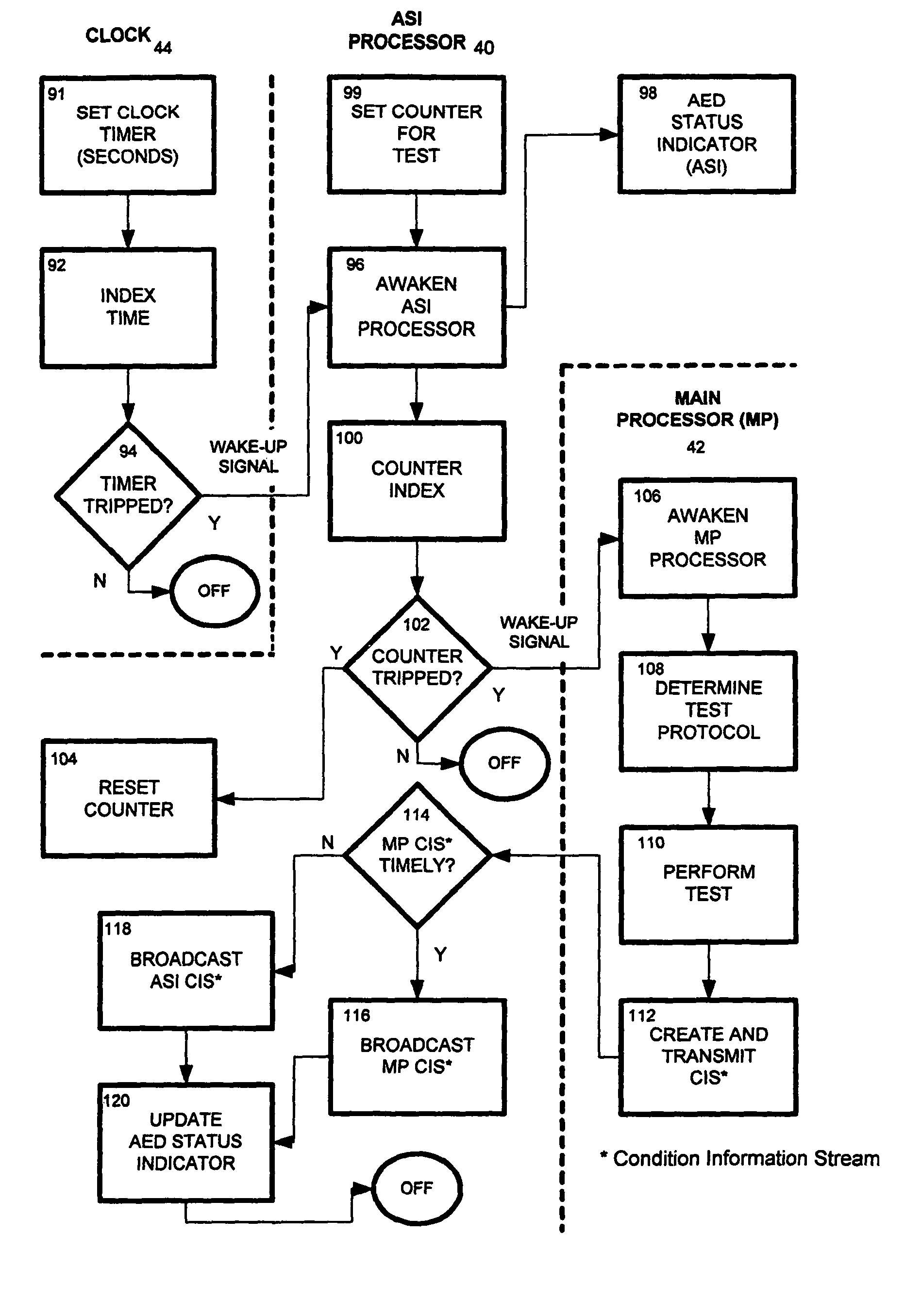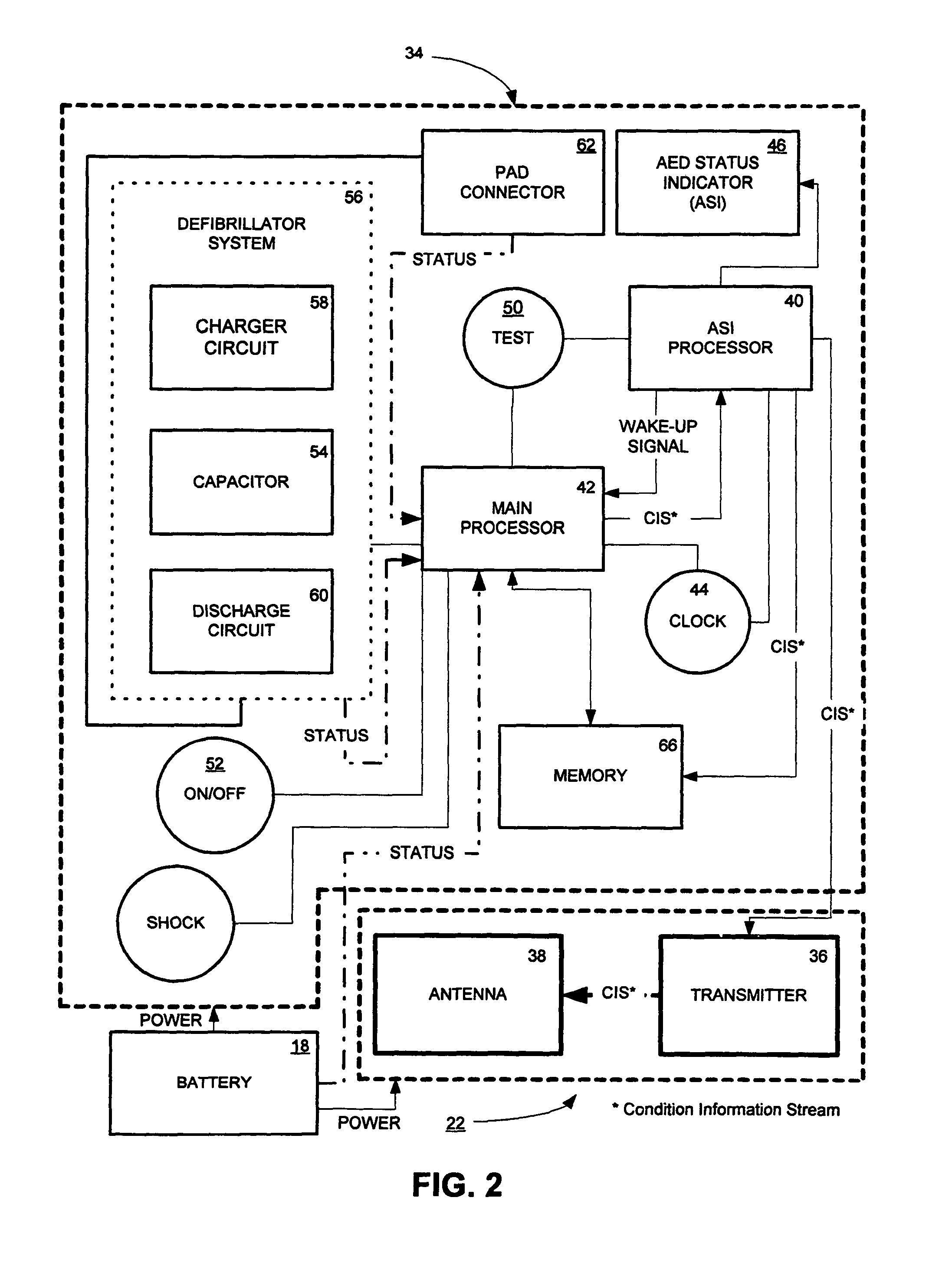System and method for monitoring external portable medical devices
a portable medical device and monitoring system technology, applied in signalling systems, instruments, therapy, etc., can solve the problems of shortening the battery life, peds are unable to provide the necessary life saving, and the heart cannot pump blood through the body properly
- Summary
- Abstract
- Description
- Claims
- Application Information
AI Technical Summary
Benefits of technology
Problems solved by technology
Method used
Image
Examples
Embodiment Construction
[0028]The term “portable emergency medical device” as used herein means a medical device intended by its design to be readily movable (e.g., carried) by a typical human being of ordinary strength, and to be a self-contained medical device (e.g., has an integrated portable power source (e.g., battery, crank generator)), which performs a medical procedure (e.g., a defibrillator) that is stored in a location, such as on a shelf or in a closet, and for use is retrieved and associated with a body, such as that of a human, to perform the medical procedure for which it was created. The term “broadcast transmitter / receiver combination” as used herein means a broadcast transmitter and broadcast receiver that work in combination that need not be collocated, but are not as a precondition to transmitting and receiving data required to establish first their mutual co-existence and compatibility (e.g., Wi-Fi and Bluetooth). Thus all things being equal, a broadcast transmitter transmits its data c...
PUM
 Login to View More
Login to View More Abstract
Description
Claims
Application Information
 Login to View More
Login to View More - R&D
- Intellectual Property
- Life Sciences
- Materials
- Tech Scout
- Unparalleled Data Quality
- Higher Quality Content
- 60% Fewer Hallucinations
Browse by: Latest US Patents, China's latest patents, Technical Efficacy Thesaurus, Application Domain, Technology Topic, Popular Technical Reports.
© 2025 PatSnap. All rights reserved.Legal|Privacy policy|Modern Slavery Act Transparency Statement|Sitemap|About US| Contact US: help@patsnap.com



